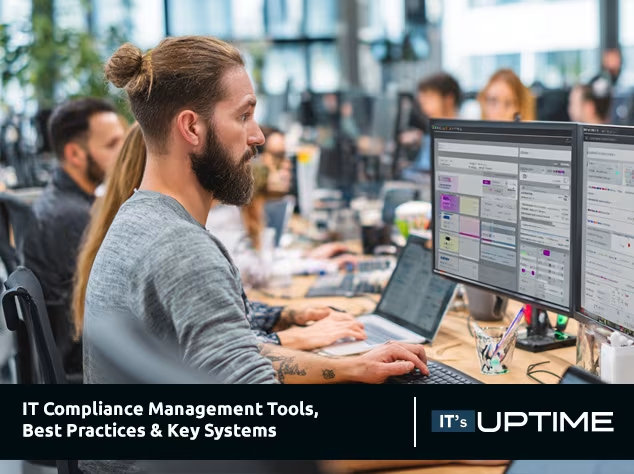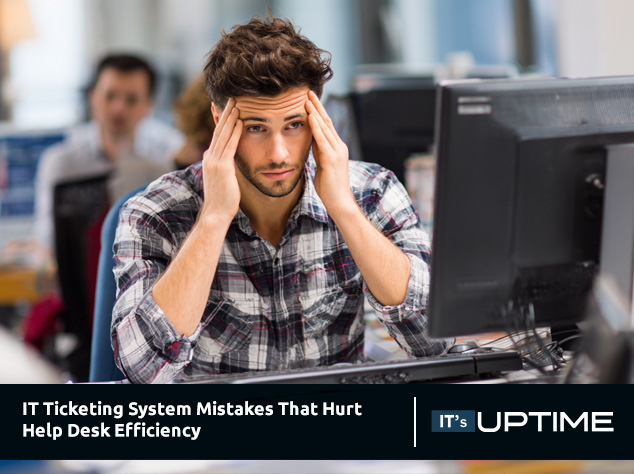Cybersecurity as a Service for Businesses: How Do You Know if You Need CSaaS?
George Grubor


Most businesses know they need better protection—but few feel truly prepared. In fact, CompTIA’s 2025 cybersecurity study found that only 25% think things are getting better, and just 22% say their company’s efforts are fully on track.
That gap is a problem. As cyber threats become faster and more complex, many in-house security teams just can’t keep up. Outdated tools and limited staff leave businesses exposed.
This is where Cybersecurity as a Service (CSaaS) steps in. With a CSaaS provider, companies get expert-level protection, full coverage, and real-time response—all managed remotely and delivered via the cloud.
This blog breaks down how it works, what it includes, and why it’s quickly replacing traditional cybersecurity for modern businesses.

What is cybersecurity as a service (CSaaS)?
Cybersecurity as a Service (also written as cybersecurity-as-a-service or cyber security as a service) is a subscription-based security model that lets businesses outsource some or all of their security operations to third-party experts.
Rather than owning and managing their own cybersecurity infrastructure, businesses can access a full suite of cybersecurity tools, security professionals, and cloud-based protections under one security platform.
The appeal of CSaaS lies in its simplicity and scope. Instead of buying and managing complex security software or hiring a full cybersecurity team, a business can subscribe to a CSaaS platform and get 24/7 access to security monitoring and managed cybersecurity services that are always up to date.
Five key services under cyber security as a service
Not sure which security services your business actually needs? Below are five essential cybersecurity-as-a-service offerings that help organizations stay protected, responsive, and fully covered.
1. Managed Detection and Response (MDR)
MDR combines real-time security monitoring with incident response and is one of the most in-demand services within a CSaaS offering.
Businesses that use MDR benefit from having cybersecurity professionals constantly analyzing network traffic, scanning for signs of cyber attacks, and neutralizing threats before they can cause damage. This also reinforces cybersecurity and data privacy, reducing the risk of breaches.
This service is typically powered by a centralized cybersecurity platform that aggregates threat intelligence across clients, industries, and regions.
Some platforms, like Check Point Software, use AI and machine learning to detect anomalies that human analysts might miss. The goal is to keep the organization’s security posture strong by detecting and mitigating attacks in real time.
2. Email security and phishing protection
One of the most common vectors for data breaches remains email. A single employee clicking on a malicious link can trigger a cyber incident that compromises cybersecurity and data privacy.
That’s why email security is often built into the CSaaS platform. These tools filter out threats, block malicious attachments, and apply advanced security measures like domain spoofing protection and behavior-based scanning.
For many businesses, outsourcing email security as part of a broader cybersecurity strategy helps close a critical gap—especially as phishing tactics grow more convincing and harder to detect with legacy tools.
3. Identity and Access Management (IAM)
A strong security solution doesn’t just keep bad actors out—it ensures that the right people have access to the right systems at the right times. That’s the job of identity and access management.
IAM services under a CSaaS model provide fine-grained control over access, supporting both managed cybersecurity and compliance. They often integrate multi-factor authentication, single sign-on (SSO), and role-based access controls.
When delivered via the cloud, IAM tools become easier to manage and update—especially for organizations with remote or hybrid teams.
4. Endpoint security
In a world where laptops, phones, and tablets connect from anywhere, endpoint security is more important than ever.
This service within a cybersecurity-as-a-service model helps monitor and protect every device connected to your network, ensuring no backdoor remains unguarded.
From antivirus software to behavioral analytics, modern endpoint security solutions detect potential security threats even when devices operate outside the corporate firewall. This supports both cybersecurity and data privacy needs.
For companies without a dedicated in-house cyber security team, this layer is essential for maintaining visibility and control over remote endpoints.
5. Security Information and Event Management (SIEM)
SIEM tools collect and analyze log data across an organization’s digital environment. When integrated into a cybersecurity as a service platform, SIEM helps detect anomalies, improve managed cybersecurity, and reduce response time to incidents.
The best security information and event management tools are built to scale and automate response.
They offer centralized visibility into the organization's security infrastructure and personnel, helping cybersecurity experts understand not just what's happening, but why—and how to prevent it in the future.

How cybersecurity as a service differ from traditional cybersecurity
While both aim to protect against cyber threats, the delivery model, management burden, and scalability of CSaaS make it a significantly different experience than maintaining in-house security or deploying traditional cybersecurity solutions.
Here’s how they compare:
- Ownership of infrastructure
- Traditional Cybersecurity: Requires purchasing and managing hardware and software in-house.
- Cybersecurity-as-a-Service: Uses cloud services and shared infrastructure provided by a third-party CSaaS provider.
- Traditional Cybersecurity: Requires purchasing and managing hardware and software in-house.
- Staffing requirements
- Traditional: Depends on building and maintaining a full cybersecurity team internally.
- CSaaS: Offers access to external cybersecurity experts and managed cybersecurity support.
- Traditional: Depends on building and maintaining a full cybersecurity team internally.
- Scalability
- Traditional: Scaling up involves delays—hardware purchases, recruitment, and configuration.
- CSaaS: Delivers scalable security solutions that can adjust in real-time to business growth.
- Traditional: Scaling up involves delays—hardware purchases, recruitment, and configuration.
- Cost model
- Traditional: Involves upfront capital expenses and ongoing maintenance.
- CSaaS: Offers predictable monthly costs with better control over cybersecurity and data privacy budgets.
- Traditional: Involves upfront capital expenses and ongoing maintenance.
- Update and patch management
- Traditional: Internal teams are responsible for tracking and applying updates.
- CSaaS: The CSaaS platform handles updates automatically, ensuring the latest security protections.
- Traditional: Internal teams are responsible for tracking and applying updates.
- Coverage and specialization
- Traditional: Often limited to what the in-house team can manage.
- CSaaS: Includes cloud, endpoint, and network security—plus compliance and data privacy protections.
- Traditional: Often limited to what the in-house team can manage.
These differences make CSaaS attractive to organizations that want a simpler, more reliable approach to managed cybersecurity.

7 questions to ask your business before getting cybersecurity as a service
Not sure if cybersecurity-as-a-service is the right fit for your business? Ask yourself these seven questions to see where your current security stands—and what might be missing.
1. Are you struggling to keep up with evolving cyber threats?
New types of cybersecurity threats emerge daily. If your in-house cybersecurity team is stretched thin or relying on outdated security tools, your business could be vulnerable to cyber attacks, phishing campaigns, and data breaches.
Cybersecurity as a service gives businesses access to the latest security capabilities—without the need to build an advanced cybersecurity platform from scratch.
A CSaaS provider continuously updates its cybersecurity tools, integrates threat intelligence, and adapts to emerging risks. This means your business benefits from a proactive security solution, rather than reacting to incidents after damage is done.
2. Do you lack 24/7 security monitoring?
Cyber threats don’t wait until business hours. Many companies don't have the budget for round-the-clock security monitoring, leaving their network security exposed during off-hours or weekends.
With cybersecurity-as-a-service, continuous monitoring and alerting are built in. Most CSaaS platforms operate 24/7 with security professionals who monitor network traffic, detect security incidents, and initiate rapid incident response.
Whether you're a mid-sized firm or a growing enterprise, having access to constant security operations drastically reduces response times and strengthens your security posture.
3. Is your business expanding into cloud services?
As more organizations migrate to cloud services, they often face gaps in their cloud security strategy. Traditional perimeter-based security solutions struggle to protect workloads that are distributed across multiple environments. CSaaS includes tools built for the cloud—supporting cybersecurity and data privacy across platforms.
A cybersecurity-as-a-service model fits this modern infrastructure, offering cloud-native security tools, application security, and integrated data security controls for hybrid or fully cloud-based operations.
CSaaS allows organizations to secure their cloud environments while avoiding the complexity of managing multiple security software platforms in-house.
4. Are your security policies outdated or inconsistent?
Maintaining up-to-date security policies is a constant challenge, especially as businesses adopt new technologies or expand their workforce.
Cybersecurity services included in a CSaaS offering often include policy development, compliance frameworks, and identity and access management to ensure consistent enforcement across systems.
CSaaS helps businesses enforce policies across devices and users, supporting compliance and managed cybersecurity.
5. Are you spending more on cybersecurity but seeing fewer results?
Cybersecurity spending can spiral without delivering meaningful protection. Businesses invest in individual tools—antivirus software, firewalls, or access control—but without a unified security platform, these tools don’t work together effectively.
A CSaaS model offers integrated cybersecurity services that optimize spending and improve coverage by eliminating redundancy and ensuring every dollar spent enhances your security posture.
Managed cybersecurity reduces operational overhead while delivering more value than a patchwork of hardware and software solutions.
6. Do you have enough experienced security personnel?
A major challenge for SMBs is the shortage of qualified cybersecurity experts. Building a dedicated in-house cyber security team can take months and cost far more than most businesses are willing to spend.
Outsourced security through cybersecurity-as-a-service gives immediate access to security professionals, cybersecurity specialists, and incident response teams without the hiring headaches.
A CSaaS provider gives you a full team to support your operations and maintain strong cybersecurity and data privacy.
7. Can your current team handle a major security incident?
When a data breach or high-impact cyber incident happens, businesses need fast, coordinated action. Most internal IT teams aren’t equipped for complex incident response, especially if it involves cross-system investigation or rapid threat intelligence analysis.
Cybersecurity as a service equips companies with access to forensic expertise, recovery protocols, and advanced cybersecurity platforms designed to contain damage and restore systems. It’s not just about preventing attacks—but knowing you’re fully covered when they happen.
IT's UpTime: Get cybersecurity that actually works
Protect your business with cybersecurity that doesn’t cut corners.
With IT’s UpTime, you get a complete security platform tailored to your needs—from threat intelligence and response to scalable tools that grow with you.
Our managed cybersecurity approach helps businesses modernize without the cost and delay of building an internal team. We also protect your cybersecurity and data privacy with proactive measures and always-on monitoring.
Book a discovery call today to find out how our CSaaS platform can cover your blind spots, reduce risk, and give your business the dedicated security it needs to thrive.
Let our team of cybersecurity professionals help you build a smarter, stronger, and more resilient future.
Frequently asked questions
What is cybersecurity-as-a-service, and how does it help organizations?
Cybersecurity-as-a-service (also written as cybersecurity as a service or cyber security as a service) is a subscription-based security solution that allows businesses to outsource their entire security operations to a third-party provider.
It helps organizations by delivering expert-level protection, improving cybersecurity and data privacy, and avoiding the need for a large in-house team.
How is cybersecurity-as-a-service different from traditional cybersecurity?
The key difference is that traditional cybersecurity relies on an in-house cybersecurity team managing hardware and software solutions, while CSaaS uses a cloud-based cybersecurity model that’s delivered via the cloud.
CSaaS provides external managed cybersecurity services through a scalable platform that adapts to your needs.
What services does a typical CSaaS provider offer?
A reliable CSaaS provider offers a variety of cybersecurity services, including cloud security, endpoint security, email security, identity and access management, security information and event management, and data security.
These types of services are designed to improve an organization’s security posture and reduce the risk of cyber incidents and data breaches.
Can cybersecurity-as-a-service replace our in-house cyber security team?
Yes, many businesses replace or supplement their in-house cyber security team with outsourced security partners who offer managed cybersecurity.
A CSaaS platform often includes a full team of cybersecurity specialists, from cybersecurity experts to analysts who focus on security policies, security strategy, and the overall management of cybersecurity operations.
Is Check Point Software part of cybersecurity-as-a-service offerings?
Some advanced cybersecurity platform options integrate with Check Point Software, a leader in enterprise-grade security software.
When paired with a CSaaS solution, Check Point enhances the security infrastructure and personnel of an organization, providing deeper insights into network traffic, better control over cyber threats, and stronger cyber security solutions overall.
What kinds of businesses benefit most from cybersecurity-as-a-service?
Small to mid-sized businesses benefit most from cybersecurity-as-a-service, especially those without a full in-house security team or who need support handling cybersecurity risks like security breaches, cyber attacks, or potential security threats.
It’s also ideal for growing companies that require scalable security solutions and flexible cybersecurity strategies to meet evolving security requirements. CSaaS supports their growth by offering flexible cybersecurity and data privacy services.
How does CSaaS help reduce cybersecurity spending without sacrificing protection?
By bundling various services under one security platform, cybersecurity-as-a-service helps reduce costs while maintaining or improving the level of dedicated security provided.
Instead of purchasing individual security tools or building a costly internal team, businesses can work with cybersecurity specialists who deliver real-time protection, maintain compliance, and monitor threats—all while keeping cybersecurity spending predictable and efficient.









